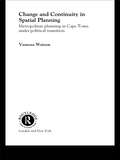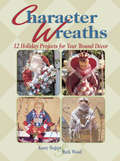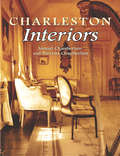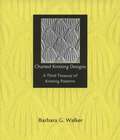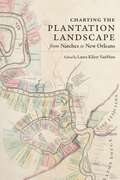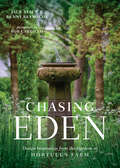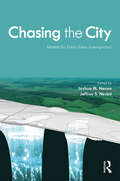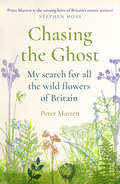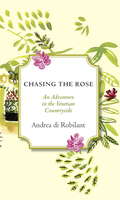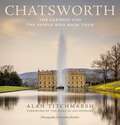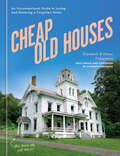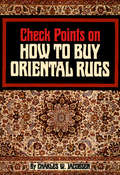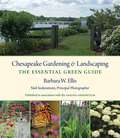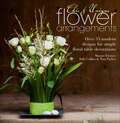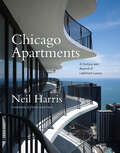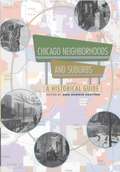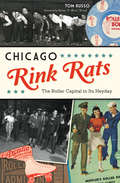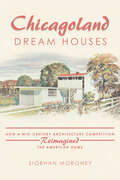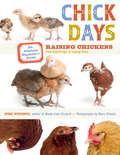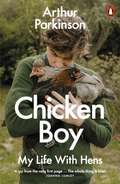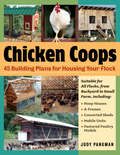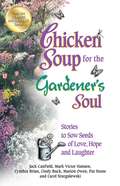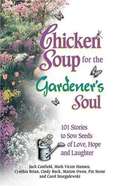- Table View
- List View
Change and Continuity in Spatial Planning: Metropolitan Planning in Cape Town Under Political Transition (Cities And Regions Ser.)
by Vanessa WatsonChange and Continuity in Spatial Planning addresses a question of enduring interest to planners: can planning really bring about significant and positive change? In South Africa the process of political transition appeared to create the preconditions for planners to demonstrate how their traditional humanitarian and environmental concerns could find concrete expression in the reshaping of the built environment.Integral to this story is how planning practices have been shaped by the past, in a rapidly changing context characterised by a globalising economy, new systems of governance, a changing political ideology, and a culture of intensifying poverty and diversity. More broadly, the book addresses the issue of how planners use power, in situations which themselves represent networks of power relations, where both planners and those they engage with operate through frames of reference fundamentally shaped by place and history.
Character Wreaths
by Kasey Rogers Mark WoodThe home decor market is going strong - with little sign of slowing - and wreaths are an extremely popular way to add panache to one’s home. This book goes beyond the "typical flower and fruit" wreaths. Readers will find characters that relate to seasons and holidays, including Uncle Sam, Miss Liberty, Santa, a mummy, and Father Time.. Focusing on technique, authors Kasey Rogers and Mark Wood cover the basics of creating a character wreath, from making the face to adding the sleeves to complete the perfect outfit. Each of the projects includes stunning photographs and step-by-step instructions. Detailed instructions for character wreaths that add unique decor to any home. Stunning photographs to guide the reader through each project
Charleston Interiors (Dover Architecture)
by Samuel Chamberlain Narcissa ChamberlainThis splendid pictorial survey depicts 51 historic homes of Charleston, South Carolina. Over 300 photographs, accompanied by descriptive text, depict exquisite 18th- and 19th-century houses and their interiors. Includes illustrations of Ashley Hall, Crayton Hall, the Joseph Manigault house, as well as the homes of Colonel William Rhett, John Edwards, Charles Pinckney, and others.
Charted Knitting Designs: A Third Treasury of Knitting Patterns
by Barbara G. WalkerThis third book is a departure from the first two in that nearly all of the patterns were designed by the author and the charted instructions rise above language barriers making them truly universal. How pleased we are to be able to keep the essential information embodied in these books available to knitters.
Charting the Plantation Landscape from Natchez to New Orleans (Reading the American Landscape)
by Laura Kilcer VanHussCharting the Plantation Landscape from Natchez to New Orleans examines the hidden histories behind one of the nineteenth-century South’s most famous maps: Norman’s Chart of the Lower Mississippi River, created by surveyor Marie Adrien Persac before the Civil War and used for decades to guide the pilots of river vessels. Beyond its purely cartographic function, Persac’s map depicted a world of accomplishment and prosperity, while concealing the enslaved and exploited laborers whose work powered the plantations Persac drew. In this collection, contributors from a variety of disciplines consider the histories that Persac’s map omitted, exploring plantations not as sites of ease and plenty, but as complex legal, political, and medical landscapes.Essays by Laura Ewen Blokker and Suzanne Turner consider the built and designed landscapes of plantations as they were structured by the logics and logistics of both slavery and the effort to present a façade of serenity and wealth. William Horne and Charles D. Chamberlain III delve into the political activity of formerly enslaved people and slaveholders respectively, while Christopher Willoughby explores the ways the plantation health system was defined by the agro-industrial environment. Jochen Wierich examines artistic depictions of plantations from the antebellum years through the twentieth century, and Christopher Morris uses the famed Uncle Sam Plantation to explain how plantations have been memorialized, remembered, and preserved.With keen insight into the human cost of the idealized version of the agrarian South depicted in Persac’s map, Charting the Plantation Landscape encourages us to see with new eyes and form new definitions of what constitutes the plantation landscape.
Chasing Eden: Design Inspiration from the Gardens at Hortulus Farm
by Jack Staub Renny Reynolds&“Vision, tenacity, and a perfectionist&’s eye are the qualities that shine out from this account of a paradise garden created by two of America&’s foremost stylists.&” —Anna Pavord, author of The Curious Gardener and Landskipping One of the most spectacular private gardens in America, Hortulus Farm is the masterpiece of Renny Reynolds and Jack Staub, renowned experts in the fields of design, gardening, and entertaining. It is beautifully captured in Chasing Eden, a lavishly illustrated roadmap to creating a personal Eden. Hortulus Farm is a not only a model of classical tenets, but also a showcase of how traditions can be successfully broken. Gardeners will discover information on specific design principles, from vistas and allées to hardscaping and water features. They will also learn how to adapt these principles to less-than-optimal settings without sacrificing a site&’s sense of place. Both aspirational and practical, Chasing Eden will inspire home gardeners to create their own earthly paradise.
Chasing the City: Models for Extra-Urban Investigations
by Joshua M Nason Jeffrey S NesbitHistorically, many architects, planners, and urban designers solicit idealistic depictions of a controllable urban environment made from highly regulated geometrical organizations and systematically defined processes. Rather than working as urban "designers" who set out to control and implant external processes, we shift our approach to that of urban "detectives," who set out to chase the city. Charged with approaching the city more responsively, we investigate what we do not know, allowing the city to direct our work. As urban detectives, we have the ability to interrogate and respond to the elaborate patterns emerging from self-generated, internalized urban interactions. Chasing the City asks what are the current design trends shaping how we, first, understand the cities of today to, then, produce informed decisions on the continuously undefined evolving city of tomorrow. Intentionally, the work here does not adhere to rudimentary notions of supposed singularities or rely upon past generations of idealistic utopian models. Rather, Chasing the City delineates current models of urban investigation that seek to respond to the nature of cities and develop heretofore-urban strategies as concurrently negotiated future urbanism. This edited volume provides a collection of innovative design research projects based on shared notions of Chasing the City through three bodies of strategic frameworks: (1) Mapping, (2) Resource, and (3) Typology. This structure ultimately allows readers, as fellow urban detectives, access to exploratory tools and methods of detection that accumulate from our environs, both practical and projective in our chase of the city.
Chasing the Ghost: My Search for all the Wild Flowers of Britain
by Peter Marren**ONE OF THE GUARDIAN’S BEST BOOKS OF 2018**Join renowned naturalist Peter Marren on an exciting quest to see every species of wild plant native to Britain.The mysterious Ghost Orchid blooms in near darkness among rotting leaves on the forest floor. It blends into the background to the point of invisibility, yet glows, pale and ghostly. The ultimate grail of flower hunters, it has been spotted only once in the past twenty-five years. Its few flowers have a deathly pallor and are said to smell of over-ripe bananas. Peter Marren has been a devoted flower finder all his life. While the Ghost Orchid offers the toughest challenge of any wild plant, there were fifty more British species Peter had yet to see, having ticked off the first 1,400 rummaging in hedges, slipping down gullies and peering in peat bogs. But he set himself the goal of finding the remaining fifty in a single summer. As it turned out, the wettest summer in years. This expert and emotional journey takes Peter the length and the breadth of the British Isles, from the dripping ancient woods of the New Forest to the storm-lashed cliffs of Sutherland. He paddles in lakes, clambers up cliffs in mist and rain, and walks several hundred miles, but does he manage to find them all? Partly about plants, partly autobiography, Chasing the Ghost is also a reminder that to engage with wild flowers, all we need to do is look around us and enjoy what we see. Praise for Chasing the Ghost:‘Peter Marren is the unsung hero of Britain’s nature writers’ Stephen Moss, author of Dynasties‘Jolly, quixotic and ends with real poignancy’ Guardian ‘A poignant reminder to us all to engage with the wild flowers that grow around us’ i Newspaper
Chasing the Rose
by Andrea Di RobilantFrom the author of the best-selling A Venetian Affair, here is the charming chronicle of his search for the identity of a mysterious old rose. Andrea di Robilant's tale takes us back to the time of Josephine Bonaparte, as well as into some of the most delightful rose gardens in Italy today, brought to colorful life on the page in the watercolors of artist Nina Fuga. In his 2008 biography of the Venetian lady Lucia Mocenigo (his great-great-great-great- grandmother), di Robilant described a pink rose that grows wild on the family's former country estate, mentioning its light peach-and-raspberry scent. This passing detail led to an invitation for an audience with a local rose doyenne, Eleonora Garlant. She and other experts wondered if di Robilant's unnamed rose could possibly be one of the long-lost China varieties that nineteenth-century European growers had cultivated but which have since disappeared. On the hunt for the identity of his anonymous yet quietly distinctive rose, Di Robilant finds himself captivated by roseophiles through time--from Lucia and her friend Josephine Bonaparte to the gifted Eleonora, whose garden of nearly fifteen hundred varieties of old roses is one of the most significant in Europe--and by the roses themselves, each of which has a tale to tell. What starts out as a lighthearted quest becomes a meaningful journey as di Robilant contemplates the enduring beauty of what is passed down to us in a rose, through both the generosity of nature and the cultivating hand of human beings, who for centuries have embraced and extended the life of this mysterious flower.From the Hardcover edition.
Chatsworth: The gardens and the people who made them
by Alan TitchmarshDiscover Jane Austen's real-life inspiration for Darcy's Pemberley.Follow Alan into Chatsworth's irresistible world of visionaries, pioneers, heroes, villains and English eccentrics, and celebrate the men and women who have shaped the history of the estate over five centuries. With his passionate knowledge of both the house and gardens, as well as his long-established relationship with the Cavendish family, Alan is the perfect guide with whom to explore the Palace of the Peaks.Featuring stunning, specially commissioned photography of the gardens and parkland, alongside long-forgotten images and memorabilia newly unearthed in the estate archives, this vivid companion, crowded with character and colour, is a book to treasure and revisit over and over again.
Cheap Old Houses: An Unconventional Guide to Loving and Restoring a Forgotten Home
by Elizabeth Finkelstein Ethan FinkelsteinFrom the founders of the HGTV show and Instagram Cheap Old Houses comes a stunning collection of beautiful, affordable homes and inspiration for buying and restoring an historic house.Welcome to the magical world of Cheap Old Houses, where the new American dream comes with zero mortgage and an affordable lifestyle fit for a storybook. Ethan and Elizabeth Finkelstein have scoured the country to find homes in desperate need of saving—including a $45,000 Victorian in Mississippi, a $25,000 mansion in Indiana, an $82,000 recreational camp in Maine, and more. Cheap Old Houses features the stories of how these homes were acquired and lovingly restored.Within these pages, you&’ll discover sprawling Victorian mansions, Italianate-style farmhouses, off-the-beaten-path cabins, and even old churches turned into residences. You&’ll meet a couple who camped out on their back porch while they made their 6,000-square foot manor livable, and homeowners who found a free bungalow and moved it seventy miles to their property. Additionally, Elizabeth, a historical preservationist, gives information on the details to preserve in historic houses, from pocket doors that might be hiding in the walls to badly cracked plaster walls that are worth repairing and butler&’s pantries that are once again more desirable for storing dishes and small appliances.With hundreds of beautiful photographs capturing these homes in all their glory, you&’ll be inspired to find &“the one&”—a fixer upper to rescue that will rescue you right back.
Check Points on How to Buy Oriental Rugs
by Charles W. JacobsenThe check points represent the essence of his five decades of experience in buying and selling new and antique Oriental rugs. Experienced dealers and first-time buyers alike will benefit from the expert information and advice Mr. Jacobsen offers.
Check Points on How to Buy Oriental Rugs
by Charles W. JacobsenThe check points represent the essence of his five decades of experience in buying and selling new and antique Oriental rugs. Experienced dealers and first-time buyers alike will benefit from the expert information and advice Mr. Jacobsen offers.
Chesapeake Gardening and Landscaping
by Neil Soderstrom Barbara W. EllisWhat if, one step at a time, we could make our gardens and landscapes more eco-friendly? Barbara W. Ellis's colorful, comprehensive guide shows homeowners, gardeners, garden designers, and landscapers how to do just that for the large and beautiful Chesapeake Bay watershed region. This area includes Maryland, Virginia, Delaware, Washington, D.C., and part of West Virginia (translating to portions of USDA Zones 6, 7, and 8). Here, mid-Atlantic gardeners, from beginners to advanced, will find the essential tools for taking steps to make their gardens part of the solution through long-term planning and planting. The guide is built from the ground up around six simple but powerful principles that anyone can use:* Reduce lawn* Build plant diversity* Grow native plants* Manage water runoff* Welcome wildlife* Garden wiselyIncluded are detailed instructions for assessing and designing your particular garden or landscape site; choosing and caring for trees, shrubs, vines, ground covers, and flowers; and succeeding with such conditions as shade or poor soil. From rain gardens to woodland gardens, meadow gardens to wildlife gardens, and much more, this indispensable guide features more than 300 color photographs.
Chic & Unique Flower Arrangements: Over 35 modern designs for simple floral table decorations
by Julie Collins Tina ParkesCreate your own beautiful flower arrangements with this illustrated guide featuring simple techniques, expert advice, and designs for every occasion. Full of lush photography and creative inspiration, this practical guide features more than thirty-five designs for simple floral table decorations. Covering a wide variety of styles, each project includes step-by-step instructions plus tips for working with fresh cut flowers or silk flowers. Featuring expert advice from a team of award-winning master florists, this volume includes: Arrangements to suit every occasion including weddings, Christmas, vintage tea parties, Mother's Day, birthdays, family get-togethers and dinner parties. Step-by-step advice on how to create each chic and unique design, with a helpful visual breakdown of the elements needed for each arrangement. An essential techniques section covers the basics of flower arranging, from selecting and handling flowers to the best flower arranging tools.
Chicago Apartments: A Century and Beyond of Lakefront Luxury
by Neil Harris“This excellent book” includes nearly 350 superb images, fascinating architectural history, and a new introduction by Sara Paretsky (The City Review).The Chicago lakefront is one of America’s urban wonders. The ribbon of high-rise luxury apartment buildings along the Lake Michigan shore has few, if any, rivals nationwide for sustained architectural significance. This historic confluence of site, money, style, and development lies at the heart of the updated edition of Neil Harris’s Chicago Apartments: A Century and Beyond of Lakefront Luxury.The book features more than one hundred buildings, stretching from south to north and across more than a century, each with its own special combination of design choice, floor plans, and background story. Harris, with the assistance of Teri J. Edelstein, proves to be an affable and knowledgeable tour guide, leading us through dozens of buildings, detailing a host of inimitable development histories, design choices, floor plans, and more along the way.Featuring nearly 350 stunning images and a foreword by renowned Chicago author Sara Paretsky, this new edition of Chicago Apartments offers a wide-ranging look inside some of the Windy City’s most magnificent abodes.
Chicago Neighborhoods and Suburbs: A Historical Guide
by Ann Durkin Keating"Which neighborhood?" It's one of the first questions you're asked when you move to Chicago. And the answer you give--be it Bucktown, Bronzeville, or Bridgeport--can give your inquisitor a good idea of who you are, especially in a metropolis with 230 very different neighborhoods and suburbs to choose from. Many of us, in fact, know little of the neighborhoods beyond those where we work, play, and live. This is especially true in Chicagoland, a region that spans over 4,400 square miles and is home to more than 9. 5 million residents. In Chicago Neighborhoods and Suburbs, historian Ann Durkin Keating sheds new light on twenty-first-century Chicago by providing a captivating yet compact guide to the Midwest's largest city. Keating charts Chicago's evolution with comprehensive, cross-referenced entries on all seventy-seven community areas, along with many suburbs and neighborhoods both extant and long forgotten, from Albany Park to Zion. Thoughtful interpretive essays by urban historians Michael Ebner, Henry Binford, Janice Reiff, Susan Hirsch, and Robert Bruegmann explore how the city's communities have changed and grown throughout the years, and sixty historic and contemporary photographs and additional maps add depth to each entry. From the South Side to the West Side to the North Side, just about every local knows how distinctive Chicago's neighborhoods are. Few of us, however, know exactly how they came to be. Chicago Neighborhoods and Suburbs brings the city--its inimitable neighborhoods, industries, and individuals--to life, making it the perfect guidebook for anyone with an interest in Chicago and its history.
Chicago Rink Rats: The Roller Capital in Its Heyday
by Tom Russo Darius "D-Breez" StroudBy 1950, roller skating had emerged as the number-one participatory sport in America. Ironically, the war years launched the Golden Age of Roller Skating. Soldiers serving overseas pleaded for skates along with their usual requests for cigarettes and letters from home. Stateside, skating uplifted morale and kept war factory workers exercising. By the end of the decade, five thousand rinks operated across the country. Its epicenter: Chicago! And no one was left behind! The Blink Bats, a group of Braille Center skaters, held their own at the huge Broadway Armory rink. Meanwhile, the Swank drew South Side crowds to its knee-action floor and stocked jukebox. Eighteen celebrated rinks are now gone, but rinks that remain honor the traditions of the sport's glory years. Author Tom Russo scoured newspaper archives and interviewed skaters of the roller capital's heyday to reveal the enduring legacy of Chicago's rink rats.
Chicago Spaces
by Jan Parr Nate BerkusWith big names such as Nate Berkus and Alessandra Branca putting Chicago on the national design map, and with lesser-known (but no less talented) pros working their magic from the Gold Coast to the North Shore, Chicago teems with beautiful homes. This gorgeous coffee table book not only shows these dwellings in all their splendor but also tells the stories of how they came to be. Compiled by the editors of Chicago Home + Garden magazine, Chicago Spaces is divided into two parts. The first features homes in their entirety, while the second focuses on specific rooms: dining rooms, living rooms, bedrooms, kitchens, baths, dens, foyers, and children's rooms. Readers learn how these spaces came together and find tips for making changes in their own homes, as well as a directory of the area's best furniture and accessories shops. Chicago Spaces shows readers smart ways to turn their homes into comfortable, stylish oases.
Chicagoland Dream Houses: How a Mid-Century Architecture Competition Reimagined the American Home
by Siobhan Moroney“Chicagoland Dream Houses is an engaging addition to the growing body of scholarship concerning Chicago’s twentieth-century residential landscape characterized by a diverse group of architects and builders.”--Michelangelo Sabatino, coauthor of Modern in the Middle: Chicago Houses 1929–1975
Chick Days: An Absolute Beginner's Guide to Raising Chickens from Hatching to Laying
by Jenna Woginrich Mars VilaubiJenna Woginrich chronicles the life journey of three chickens (Amelia, Honey, and Tilda) from fluffy, newly hatched bundles to grown hens laying eggs of their own. As you watch these chickens grow, you’ll learn everything you need to know about chicken behavior, feeding, housing, and health care. This playfully informative guide will inspire you to confidently raise your own feathered flock.
Chicken Boy: My Life With Hens
by Arthur ParkinsonA captivating testament to the mutual rewards and delights of keeping chickens, by the Sunday Times bestselling author of The Flower YardMost of us want a dog, or a cat, or a pony when we are young – but for Arthur Parkinson, it was always hens. Growing up in an ex-mining town in Nottinghamshire, the other kids in the playground called him 'Chicken Boy'. The quiet fulfilment of keeping hens became his sanctuary, a tonic for mental and physical health, a connection with his family and the natural world. Illustrated with Arthur's own characterful watercolours and photographs of his ‘girls’, Chicken Boy is a one-of-a-kind memoir of a life in nature.
Chicken Coops: 45 Building Ideas for Housing Your Flock
by Judy PangmanJust like houses, chicken coops come in all shapes and sizes. Judy Pangman presents how-to drawings and conceptual plans for 45 coops — from the strictly practical to flights of fancy — guaranteed to meet the needs of every bird owner, however big or small your flock may be. Color photographs and innovative suggestions fill this encouraging guide, while lively anecdotes profile an array of coop builders and their various construction methods. Start building the coop of your chickens’ dreams!
Chicken Soup for the Gardener's Soul
by Jack Canfield Mark Victor Hansen Cynthia Brian Cindy Buck Marion Owen Pat Stone Carol SturgulewskiFor beginning gardeners and veteran green thumbs--this uplifting collection of stories is filled with what every gardener knows-gardens fill lives with a special richness because they are a living reminder of the beauty in the world. Chicken Soup for the Gardener's Soul celebrates all the magic of gardening--the feeling of satisfaction that comes from creating something from nothing; the physical and spiritual renewal the earth provides; and the special moments shared with friends and family only nature can bestow. Written by hobbyists and celebrity gardeners, the stories relate the joys and challenges of gardening, with chapters on Blossoming Friendships, The Family Tree, Love in Bloom, The Seasons of Life, Overcoming Obstacles, and Potpourri.
Chicken Soup for the Gardener's Soul: 101 Stories to Sow Seeds of Love, Hope and Laughter
by Mark Victor Hansen Cynthia Brian Cindy Buck Marion Owen Pat Stone Carol Sturgulewski Jack L. CanfieldThis collection of stories is filled with what every gardener knows. The stories relate to the joys and challenges of gardening.
